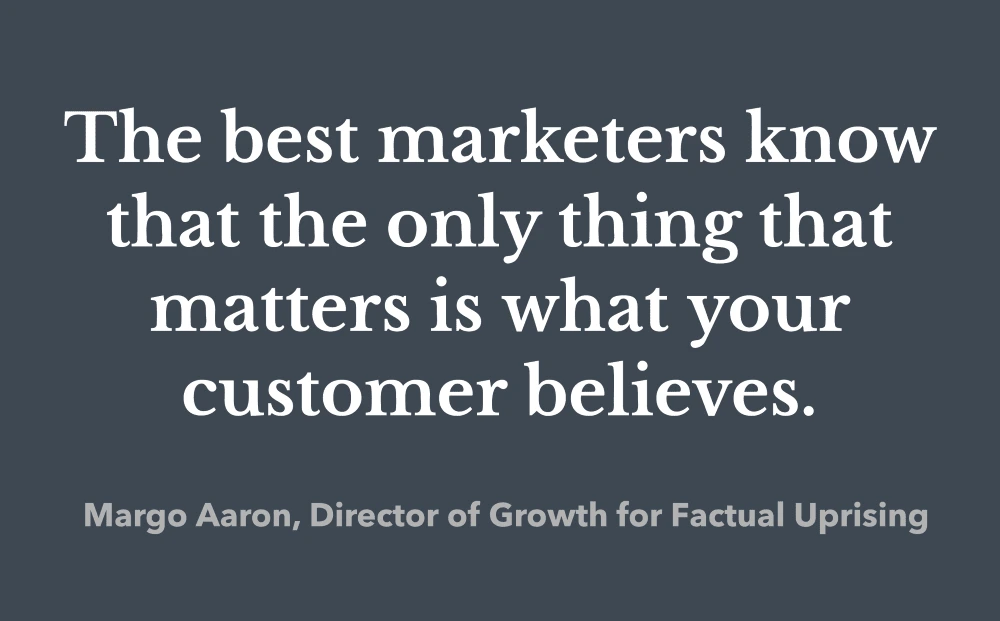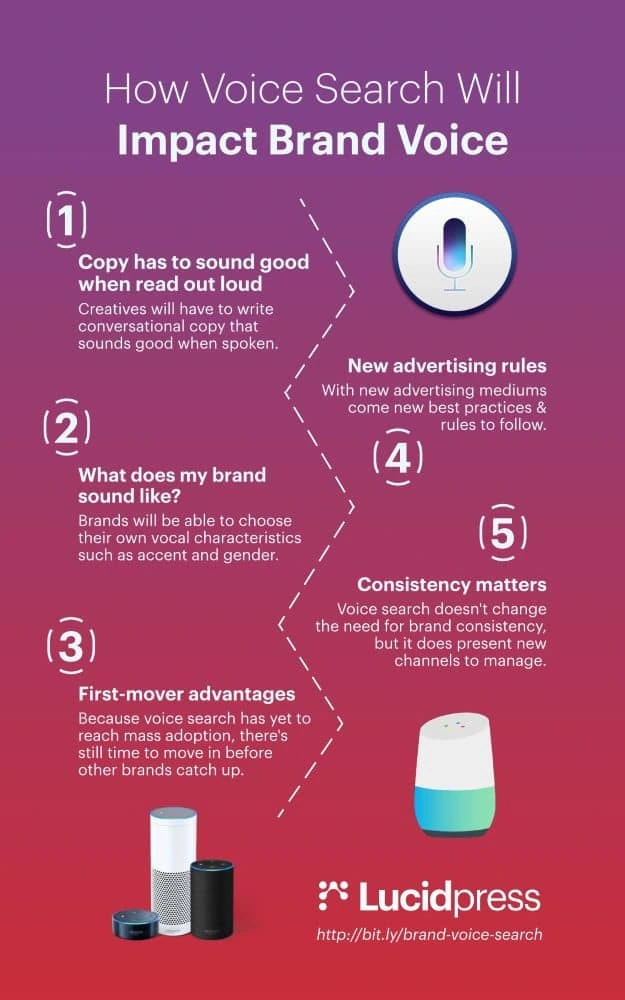I’ve been writing page titles incorrectly my entire career.
Google has provided best practices for constructing page titles, including:
- Describe the content on the page.
- Create unique title tags for each page.
- Use brief but descriptive titles.
These are all great practices to follow on every page of your site. But I’ve recently learned that there’s something else just as important as the best practices Google provides:

Don’t just optimize titles. Optimize thought sequences.
Your page title serves three primary purposes:
- To provide searchers with a description of your page.
- To provide Google with information that helps it determine how relevant your page is to a search query.
- To provide messaging to searchers that drives them to click on your result.
Succeeding in this final purpose will determine whether your pages achieve click-through rates that outperform average rates in Google. With page titles, I found an easy technique for presenting the right messaging to searchers: brand positioning.
Related: 8 best practices of high-converting websites
Why brand positioning?
Phillip Kotler, Professor of International Marketing at Northwestern University, defines brand positioning as “the art of designing the company’s offering and image to occupy a distinctive place in the target market’s mind.”
Occupying a space in the searcher’s mind is how you compel them to click on your result instead of your competitors’.
A case study
Here’s an example from a page on our site targeting the keyword “ebook templates.”
The original title for our eBook templates page was the following:
Free eBook Templates & Examples | Lucidpress
This title follows Google’s best practices: it accurately describes the page, it’s unique, and it’s brief but descriptive.
It also meets the first two purposes of a page title: it provides searchers with a description of the page, and it provides Google with information to determine how relevant your page is to a search query.
What it lacked was messaging that compelled searchers to click on our link. Nothing in the original title helped “occupy a distinctive place in the target market’s mind.”
Our hypothesis was this: If we could help searchers imagine how our eBook templates would help them grow their brands, then we’d be able to compel them to click on our result over the others.
Keeping this brand positioning in mind, here’s the new title:
Free eBook Templates & Examples to Help Build Your Brand
The result: a 118% increase in the click-through rate for the keyword “ebook templates.”
Incorporate brand positioning into your page titles
To incorporate brand positioning into your page titles, I’ve found it helpful to create a brand positioning statement for each page:
Our [subject] page helps [the audience] [achieve a result] so they can [benefit].
In the example for our eBook template page, here’s the statement we came up with:
Our eBook templates page helps small business owners position themselves as an authority so they can grow their brands.
Bonus: The power of branding
According to Marty Neumeier, author of The Brand Gap: How to Bridge the Distance Between Business Strategy and Design: “Brand will become the most powerful strategic tool since the spreadsheet.”
Data from a study we conducted at Lucidpress with the global marketing research & advisory firm Demand Metric seems to back up this statement.
In this study, we found that the average revenue increase attributed to having a consistent brand is 23%.
[Click here to view our full report on how brand consistency can help drive your company’s growth.]
We also found that brands with consistent presentation are 3-4 times more likely to enjoy excellent brand visibility than inconsistent ones.
This is the power of branding—the ability to improve organic search performance for your website and drive revenue growth for your organization. Try it on your page titles to see if it holds true for you, too.
Next steps
Ready to create compelling page titles?
- Create brand positioning statements for your high-priority pages.
- Incorporate your positioning statements into your titles.
- Track changes in click-through rates and rankings using Google’s Search Console.
Feel free to leave a comment below and tell us how it went.
Learn more about how brand consistency impacts your business in our free report.
Three years ago, Gartner predicted that 30% of our interactions with technology today would happen via conversations with smart machines—and mainstream adoption would be just around the corner.
Related: 10 digital trends that are transforming marketing in 2018
We can see the evidence of this change all around us, from Siri and Cortana to Alexa and Google Home. And while we haven’t reached mainstream adoption quite yet, marketers shouldn’t wait for the masses to catch up before grappling with the implications of voice search.
In particular, voice search represents a move from the abstract to the physical. Certain aspects of your brand—voice, tone, personality—will soon become real in ways they never have before. Just like mass marketing has shifted into digital marketing, we’re now seeing the dawn of conversational marketing with voice search. Here are five factors that show how voice search will impact your brand.
1. Copy that can be read aloud
As more people turn to smart machines to ask questions, brands should be prepared to respond in kind. Creatives will have to write copy that sounds good when read out loud—often in the form of answering a question. Offer the most important information first (remember the inverted pyramid?), and for goodness sakes, keep it brief and unambiguous.
For example, in an older blog post of ours, we discuss the definition of branding. If someone were to ask “What is branding?” today, our blog post would respond like this:
To begin to understand what a brand is, you must first understand that your brand does not exist in your marketing department, your public relations team, or your CEO’s office…
And as pretty as it looks on the page, no one is going to stick around to listen to that. Instead, our response should get straight to the point. Again, from the post:
A brand is the sum total of all the impressions a customer has, based on every interaction they have had with you, your company and your products.
If we wanted to optimize this content for voice search, we could restructure it intelligently by putting the important data first. Then, we have plenty of space for the kind of writing that’s meant to be read rather than spoken aloud.
Finally, keep in mind that voice search is more conversational than traditional search. The queries are longer, and they’re often localized (e.g. “What’s the weather like today?” or “When does The Copper Onion close tonight?”). Your responses should follow suit, mimicking how real people talk (including conversational phrases).
2. New advertising rules
With new advertising mediums come new advertising guidelines. This doesn’t just mean best practices, like we see with paid and organic digital search. We’ll also see big players in voice search (like Google) establishing new rules for brands who want in.
Remember this voice ad from Burger King last year? The commercial was designed to hijack your Google Home device by asking “What is the Whopper burger?” This request prompts devices to begin reading the Wikipedia entry for the Whopper—which, of course, Burger King had edited to their benefit.
The Whopper is a burger, consisting of a flame-grilled patty made with 100 percent beef with no preservatives or fillers, topped with sliced tomatoes, onions, lettuce, pickles, ketchup, and mayonnaise, served on a sesame-seed bun.
Oh, be quiet, already!

My feelings exactly.
Not only did this violate Wikipedia’s terms because it so clearly sounds like ad copy, it also left open the door to vandalism. People were quick to edit the Wikipedia entry to include phrases like “cancer-causing” and ingredients like “toenail clippings.” Not exactly what the fine folks at Burger King had in mind.
Even when the ad worked as intended, people were annoyed by the tactic—but online trolls had made it so, so much worse. It should come as no surprise that Google shut down the ad 3 hours later, and Burger King pulled it entirely.
Consumers aren’t used to advertising in voice search yet. Take care not to annoy them with lengthy descriptions or aggressive sales pitches—and follow the terms and guidelines of the services you use.
3. What does my brand sound like?
Today, Alexa always sounds like Alexa, but it’s not hard to imagine a future where voice search becomes highly customized. Brands will be able to choose their own vocal characteristics, which opens up a world of questions and considerations.
If your brand was a real person, what would they sound like? How would you determine:
- Gender
- Age
- Language or dialect
- Accent
- Conversational tone
- Conversational speed
- Personality

Source: Pexels
Some of these characteristics even raise ethical considerations—like gender, for example. According to OnBrand’s State of Branding report, 54% of marketers prefer a female voice assistant (while only 17% prefer a male). Nearly all the voice assistants we’re familiar with today default to female voices, which raises the question why.
“The simplest explanation is that people are conditioned to expect women, not men, to be in administrative roles—and that the makers of digital assistants are influenced by these social expectations,” says Adrienne Lafrance in an article for The Atlantic. Power structures influence our technology all the time, and it’s important for brands to consider these traits (and their impact) carefully.
In the mean time, it’s likely that female voices will continue to answer most consumers’ vocal commands. How can masculine brands compensate for this—punch up their language, perhaps?
4. Consistency matters
Voice search does not alter the impact of brand consistency, but it does present new channels to manage. Once you’ve decided what your brand sounds like, it’s important to convey that across all channels and communication. Voice and tone need to remain consistent for the brand to be distinct and recognizable.
After you’ve set the tone and refined your brand voice, go back and make sure it’s reflected everywhere:
- Voice-optimized content on webpages (especially Q&A format)
- Voice-optimized ad copy
- Product descriptions
- Social media posts (hashtags & emoji don’t always translate)
- Program dialog
- Chatbot dialog
Interesting note about chatbots: If your brand already has one, you might be ahead of the game. Because chatbots are designed to be conversational, they can help to inform your strategy for voice search. Look to them for guidance as you explore this brave new world!
5. First-mover advantages
And now, the good news. Because voice search has yet to reach mass adoption, there’s still plenty of time to move into the space before other brands catch up. It’s a rare opportunity to reap first-mover advantages without being one of the big, established brands.
“Given that many people are currently rather disappointed with their voice search interactions, the first brand to create a genuinely standout experience is going to garner a lot of excitement,” says Rob Curran in this article for Campaign. And like we’ve seen with other new mediums like augmented reality, it’s only a matter of time before someone does. Could it be you?
Key takeaway
Equal parts scary and exciting, the adoption of voice search represents enormous opportunity for savvy marketers. With it, you can deliver a digital brand experience that’s more personal and human-like than ever before—and hopefully, one that’s consistent with your brand messaging. Drive the conversation and address these factors now to enjoy the benefits while we head into the next decade.
Want to know more about the power of brand consistency? Download our free 32-page report, chock full of stats & great insights.
Bonus: Voice search infographic
Want to share these insights with your followers? We’ve adapted the main points of this article into a sharable infographic perfect for Facebook, Twitter, LinkedIn and Pinterest.
